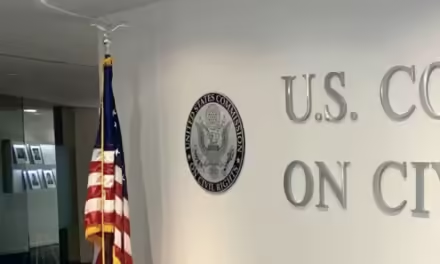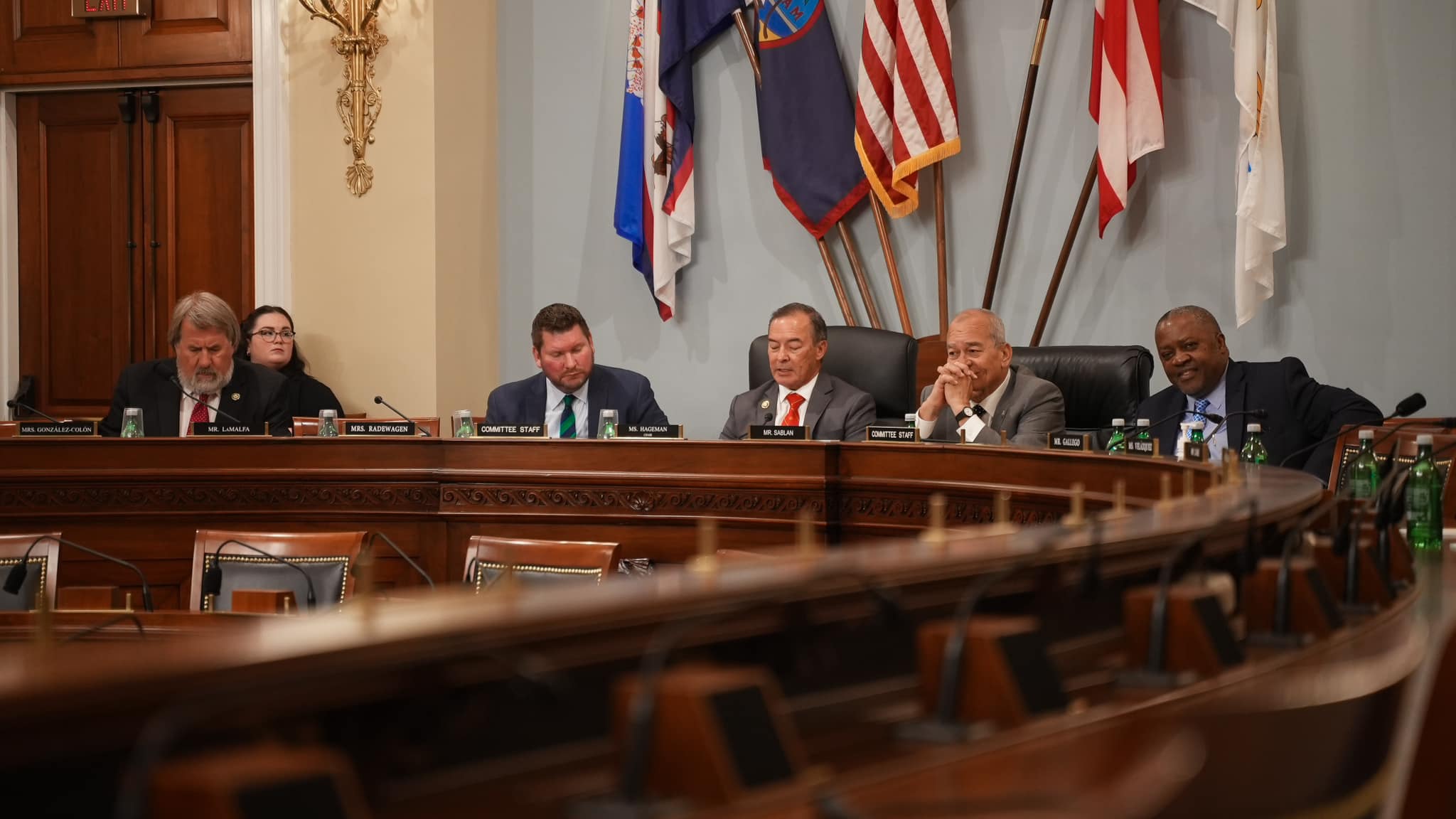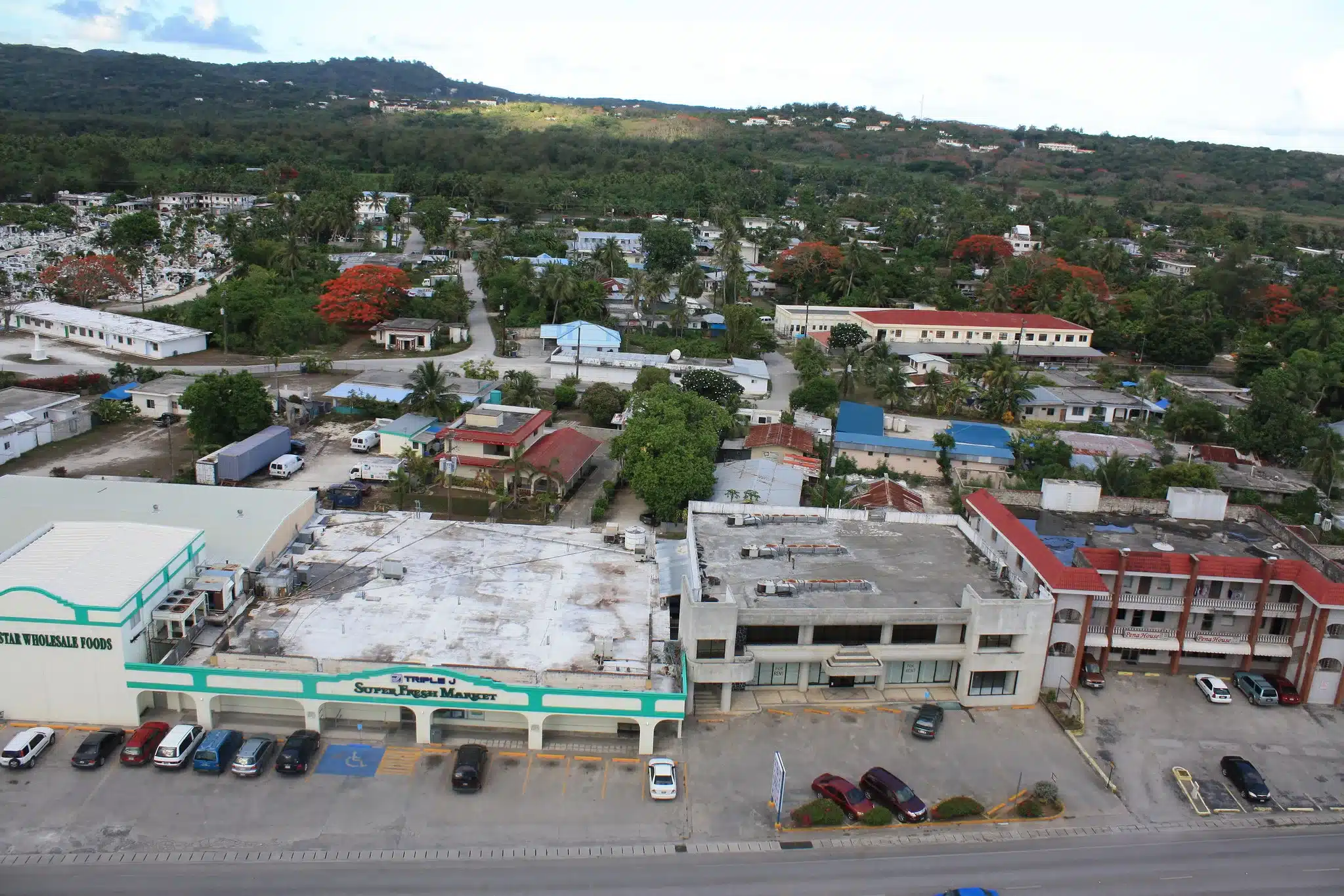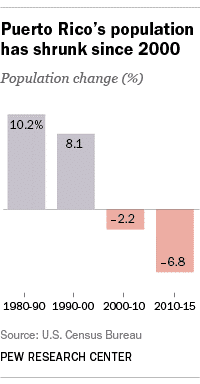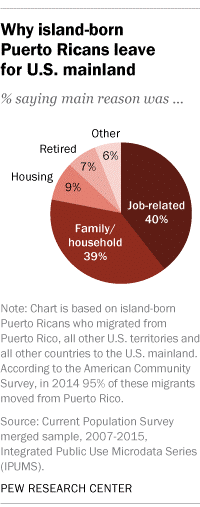Puerto Rico employment statistics misrepresent Islands’ true conditions
Puerto Rico’s economy remains in shambles, and continues to block the potential bolstering of its flagging job market. However, conflicting employment statistics suggest the island may be taking fledgling steps toward economic recovery.
Negative employment statistics continue to outnumber the positive, while the positive statistics offer only slightly hopeful signs. The island’s employment rate dipped a further 1.5 percent in May, the 39th consecutive month of decline. Puerto Rico lost 12,200 jobs in the private sector and another 1,600 in the public sector.
The growth attempts of Puerto Rico’s most established industries continue to stall. Available construction, manufacturing, and service jobs declined by over 3,000 each, while available educational, finance, health, and government jobs declined by 7,700 combined.
Moderately positive statistics portend a stronger future job market, but do little to ameliorate the market’s current overall weakness. Two specific statistics convey legitimately positive trends. In May, unemployment fell to 7%, the nation’s lowest figure since 1975. Further, the number of unemployed persons not actively seeking work decreased to 76,000, the lowest figure in five months.
Not all job sectors declined during May. Trade, transportation, and utilities jobs increased by 900 combined. Recreation and accommodation jobs increased by 500.
Long term unemployment levels indicate extremely slow, albeit existing, growth in the job market. In 2015, Puerto Rico’s unemployment rate fell by 0.8 percent, marking the third consecutive decrease in rate. In 2012, the unemployment rate increased by 1.6 percent, the last annual increase.
It is a mistake to tout the aforementioned positive statistics as a representation of true job market growth. The negative statistics, although less plentiful, carry much greater weight in indicating the island’s present status. Additionally, both long-standing economic barriers and potential legislative “solutions” will likely obscure the reality of any job market statistic.
Long Standing Economic Barriers
Two distinct factors prevent a permanently robust Puerto Rican job market. The first, American presence in Puerto Rico, reduces the island to colonial status during times of crisis and often prohibits necessary job market expansion in favor of economic stasis. The second, Puerto Rico’s population exodus, complicates any attempt to build a sustainable workforce regardless of economic status.
American Colonialism
In 1922, a Supreme Court ruling declared that Puerto Rico belongs to, but is not part of the US. The island territory exists perpetually in a peripheral state, never quite able to fully control its own economic fate.
It is American tax policy, while initially highly beneficial for Puerto Rico, that first led the island into debt. Up until the 1990’s, US produced legislation granted businesses massive tax breaks in return for movement of central operations to Puerto Rico. This created an economic boom, and introduced thousands of jobs in pharmaceuticals, textiles, and electronics. With Puerto Rico’s economy seemingly stabilized, the US removed these tax breaks and allowed Puerto Rico to implement a sales tax. The island’s economy proceeded to slump for the first time in decades, losing more than 800,000 jobs in a period stretching the mid-1990’s until 2006.
Puerto Rico temporarily solved its economic woes in 2000. Backed by US approval, the island increased sales of municipal bonds, expanding its already expansive bond market. Puerto Rican bonds are tax-exempt, making them extremely tempting investments. Bond sales upwards of $126 billion allowed Puerto Rico to continue funding its exceedingly large public workforce. However, job exodus caught up with the island during the mid-2000’s, and the economy has continually contracted since. Around the turn of the decade, the Puerto Rican bond debt became nearly unmanageable, and without private job growth, the country was unable to stave off its massive fiscal woes.
Current Puerto Rican debt circles back to US dictated economic policy. The implementation of tax breaks allowed massive job market growth, but prevented natural economic risks. Without economic autonomy, the island never built a self-sustainable job market.
A job market dependent on tax breaks cannot withstand the removal of said breaks. The US removed Puerto Rico’s tax breaks due to perceived stability, yet the US’ own policies had made the Puerto Rican economy wildly unstable. American controlled economic policy sheltered the island from financial struggle, but this near colonial control led Puerto Rico directly into its current predicament.
Continued American control without full incorporation into the US statehood framework will produce a similar pattern of false boom and recession. The creation of an autonomous oversight board through the Puerto Rico Oversight, Management, and Economic Stability Act (PROMESA) may lead to temporary recovery. However, the colonial aspects of an economic oversight board strip Puerto Rico of its chance to rebuild a better job market. The island must diversify into new industries and expand current ones. Instead, likely austerity measures will produce a tentative stability bound to eventually fail.
Puerto Rico Population Exodus
The 1950’s witnessed the most notorious Puerto Rican population exodus. Nearly 500,000 million Puerto Ricans left for the mainland, believing the US offered more robust job opportunities. This specific exodus created a classic brain drain scenario, in which Puerto Rico lost huge quantities of the intellectuals needed to stimulate economic progress.
The 2010’s have ushered in a similarly disastrous migration pattern. Since 2010, approximately 263,000 Puerto Ricans have migrated to the US, greater than the 237,000 that left during the period from 1950 through 1954. In 2014 alone, Puerto Rico lost 2 percent of its entire population, as 84,000 people left the island while only 20,000 moved back to the island.
Puerto Rico’s continuing decline in population tempers the positive signs offered by the aforementioned statistics. As more people leave the island, unemployment will fall, regardless of economic conditions. Inverse migration patterns open jobs, which then must be filled. The island’s unemployment rate has fallen to 7 percent, even as the island continues to lose jobs. Migration away from Puerto Rico nullifies the positives of the rate drop.
Similarly, the decrease in the number of unemployed persons not actively seeking work to 76,000 is not entirely a positive statistic. Puerto Ricans unable to find work often leave the island. And when these citizens leave the island, they open up other positions, allowing citizens previously abject over job prospects to reenter the job market.
Population exodus does not entirely explain the more positive leaning statistics. Puerto Rico’s technology and gaming industry, once a minor part of its economy, is beginning to grow. Modernized agriculture will likely produce a more stable agricultural job market. Puerto Rico’s job market has undoubtedly improved over the past months. Yet the fact remains, the island’s population exodus and subsequent brain drain greatly temper any perceivably positive job market growth signs.
Potential Legislative Solutions
New measures taken to address the island’s debt have come much too late. Eventually, these measures may produce a robust job market. In the present, they offer hope, but will not immediately reduce the nation’s historically bad unemployment levels.
PROMESA
The much-hyped Puerto Rico Oversight, Management, and Economic Stability Act (PROMESA) may some day stabilize Puerto Rico’s economy, but the island’s projected defaults on bond debts prevent the investment of federal funds into both private and public job sectors. As passed, PROMESA will allow Puerto Rico to restructure its municipal bond debt through the same public corporations that financed its debt in the first place. However, a restructured debt does not immediately allow massive reinvestment into private and public job sectors. Regardless of PROMESA’s success, major job market growth is many years away, as PROMESA will only free small amounts of money to begin to rebuild the market.
Jones Act
The Jones Act, passed in 1920, specifies that a ship carrying cargo between two American ports must be built in the U.S. and be 75% owned by American citizens. The potential removal of Jones Act restrictions imposed on Puerto Rico by the US could very well provide an immediate stimulus to the Puerto Rican economy. The Jones Act constitutes a clear trade barrier, as Puerto Rico owns less than 100 ships able to comply with its regulations. The act could potentially strengthen the Puerto Rico maritime industry and reduce costs on Puerto Rican made goods. Jobs in manufacturing and trade related industries could soar, vastly diversifying the island’s economy.
The removal of Jones Act restrictions may lead to all of the above benefits, if not more. However, it is just as likely to produce no immediate, or even long-term results. In order to ensure the removal produces true job market grown, Puerto Rico will need to accomplish two goals. First, it will need to convince a US job board to allow vast public spending to finance industrial development. Second, the island will need to have continued economic and governmental stability to provide its new industries a stable growth platform. As long as the island exists under the current unstable conditions, it is impossible to predict the effects of the removal of the Jones Act.
Some of the previously mentioned statistics projected positive economic growth while others projected a continued negative spiral. In reality, these statistics indicate very little. Puerto Rico still and for the near future exists in an extremely precarious state. To escape their predicament, Puerto Rico must both find a way to escape its long-term issues and pass successful economic restructuring legislation. This could eventually produce a more stable job market. However, the cold truth remains; Puerto Rico’s job market cannot be solidified through short-term fixes and will remain unstable for years to come.

